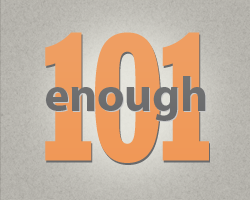
Editor’s Note: As part of the series Enough 101, this post is intended to provide a contextual background for understanding the complex issues that the Enough Project works on. We're publishing it today to coincide with the release of “Kony Hunter with Christopher Meloni,” a new video co-produced by the comedy team at Funny or Die and the Enough Project, to provide background on the LRA’s deadly operations in the Democratic Republic of Congo.
Joseph Kony’s Lord’s Resistance Army, or LRA, was formed in northern Uganda in 1987, and in the past 25 years has murdered, kidnapped, and spread terror among civilians in four countries in central Africa, including the Congo.
Despite currently being pursued by regional forces supported by U.S. military advisors, the LRA now operates in an area covering approximately 115,000 square miles in the Congo, Central African Republic, or CAR, and South Sudan.
The LRA first shifted its base of operations to Garamba National Park, Congo, beginning in 2005. Due to years of civil and regional war and lack of governance, the Congo was primed to serve as a refuge for armed groups. The LRA did not start attacking Congolese people until September 2008, instead preferring to use its base in the Congo to rebuild its strength while launching attacks and raids into CAR and southern Sudan. During this time, the United Nations peacekeeping mission in the Democratic Republic of the Congo, known at the time as MONUC, coordinated two forays into the park with the Congolese army, both of which failed to contain the LRA due to major logistical and tactical errors.
LRA leader Joseph Kony had been in peace negotiations with the government of Uganda since 2006, but ultimately refused to sign the accords. When the peace talks fell apart and the LRA began attacks in Congo, a military operation led by Uganda, with the support of the United States, launched in December 2008.
In retaliation for the Uganda-led operations, the LRA killed more than 865 civilians and abducted at least 160 children from three areas in northern Congo over a period of a few weeks in the infamous “Christmas Massacres” of December 2008 and January 2009. According to Human Rights Watch, “LRA combatants hacked their victims to death with machetes or axes or crushed their skulls with clubs and heavy sticks.”
From September 2008 through mid-January 2009, the LRA killed over 1,033 civilians and abducted at least 476 children in Congo.
In March 2010, Enough documented a series of LRA attacks on Congolese soldiers, “suggesting a level of confidence on the part of LRA fighters that one would not expect from a militia rumored to be dying out.” And in early 2011, the LRA increased attacks on more heavily populated civilian areas, targeting civilians and humanitarian aid agencies.
More recently, after a lull in attacks in the latter half of 2011, the LRA has increased its activity in Orientale province in northeastern Congo. In the first two weeks of February 2012, at least 12 LRA attacks were reported in Congo.
The armies of the four governments, with the assistance of U.S. military advisors, began a new operation against the LRA in late 2011. The mission is based in CAR and South Sudan. However, although there is a battalion of the Congolese army deployed in LRA-affected areas of Congo, it has limited ability to respond rapidly to possible threats to civilians and is conducting only some patrols in the vast area in which the LRA currently operates, according to Enough sources. The Congolese government has refused for the past six months to allow Ugandan troops to operate in its territory to pursue the LRA senior leadership and protect civilians. The Congolese government consistently denies the threat of the LRA on Congolese soil—they do not want Ugandan troops in the Congo, at least in large part due to their exploitation of Congo’s natural resources several years ago, and would prefer U.S. military aid to be given directly to the Congolese army rather than to the Ugandans.
Since 2008, LRA attacks have displaced an estimated 320,000 people in Congo’s Orientale province and 30,000 Congolese refugees have fled to the Central African Republic and South Sudan.
In January 2012, the U.N. and the African Union met with representatives of the countries affected by the LRA and agreed in principle to allow troops to freely cross borders in pursuit of LRA forces. However, in practice the Congolese government continues to block access to the Ugandan army, severely limiting the effectiveness of the mission as the LRA continues to attack civilians in Congo.
See the LRA Crisis Tracker for the most recent updates on LRA violence.
In March 2012, the office of the U.N. High Commissioner for Refugees, or UNHCR, reported that thousands of people have been displaced due to the recent spike in LRA attacks in Congo. According to a UNHCR spokesperson, “There have been 20 attacks since the beginning of this year. One person was killed and 17 abducted during these incidents."

